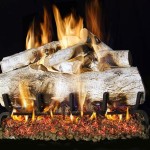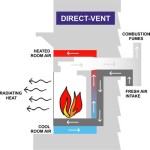Are Propane Fireplaces Dangerous? A Comprehensive Look at Safety and Risks
Propane fireplaces offer a convenient and aesthetically pleasing alternative to traditional wood-burning fireplaces. They provide instant heat, require less maintenance, and eliminate the need for firewood. However, like any appliance that utilizes combustion, a propane fireplace carries potential dangers if not properly installed, maintained, and operated. Understanding these risks and taking necessary precautions is crucial for ensuring the safe use of a propane fireplace.
The primary concern surrounding propane fireplaces stems from the inherent properties of propane itself. Propane is a highly flammable gas that, when improperly handled, can lead to explosions or fires. Additionally, the combustion process of propane produces byproducts, such as carbon monoxide, which can be lethal if allowed to accumulate in enclosed spaces. This article will examine the potential dangers associated with propane fireplaces, outline essential safety measures, and discuss the importance of regular maintenance and professional inspections.
Understanding the Potential Hazards of Propane Fireplaces
Several factors contribute to the potential dangers associated with propane fireplaces. These hazards primarily revolve around gas leaks, incomplete combustion, and improper installation. A comprehensive understanding of these risks is essential for promoting safe and responsible use.
Gas Leaks: Propane gas leaks represent a significant safety hazard. Leaks can occur due to faulty connections, damaged gas lines, or malfunctioning regulators. Propane is heavier than air, meaning it will accumulate at ground level or in low-lying areas. If a sufficient concentration of propane accumulates in an enclosed space and encounters an ignition source, such as a spark or open flame, it can result in an explosion. Even small leaks, if left undetected, can create a dangerous situation over time. The distinctive odorant added to propane, known as mercaptan, is intended to provide an early warning sign of a leak. However, reliance solely on smell is insufficient, and periodic leak testing is recommended.
Carbon Monoxide Poisoning: Carbon monoxide (CO) is a colorless, odorless, and tasteless gas produced during the incomplete combustion of propane. A properly functioning propane fireplace vents combustion byproducts safely outside the home through a chimney or vent pipe. However, if the venting system is blocked, damaged, or improperly installed, carbon monoxide can build up inside the living space. Exposure to elevated levels of carbon monoxide can lead to symptoms such as headaches, dizziness, nausea, and confusion. In severe cases, carbon monoxide poisoning can cause loss of consciousness, brain damage, and even death. Regular inspection of the venting system is vital to prevent carbon monoxide accumulation.
Fire Hazards: While designed to contain flames, a propane fireplace can still pose a fire hazard if not used correctly or if certain components malfunction. Over time, components such as the burner, pilot light assembly, or gas valve can wear down or become damaged. This can lead to erratic flames, gas leaks, or overheating, potentially igniting nearby flammable materials. Furthermore, improper installation, such as inadequate clearance from combustible materials or the use of incorrect venting systems, can also increase the risk of fire. Adhering to manufacturer guidelines and local building codes during installation is imperative.
Oxygen Depletion: While less common with modern vented propane fireplaces, oxygen depletion can be a concern, particularly in smaller, poorly ventilated spaces. The combustion process consumes oxygen, and a propane fireplace can draw a significant amount of oxygen from the surrounding air. In poorly ventilated areas, this can lead to a decrease in oxygen levels, causing symptoms such as drowsiness, fatigue, and shortness of breath. While not as immediate a threat as carbon monoxide poisoning, prolonged exposure to low oxygen levels can be detrimental to health. Ensuring adequate ventilation, especially in smaller rooms, is essential.
Essential Safety Measures for Propane Fireplaces
To minimize the risks associated with propane fireplaces, it is crucial to implement and adhere to a series of safety measures. These precautions encompass proper installation, regular maintenance, and responsible operation.
Professional Installation: The installation of a propane fireplace should always be performed by a qualified and licensed professional. A professional installer will ensure that the fireplace is installed according to manufacturer specifications and local building codes. This includes proper connection to the gas line, secure and leak-free fittings, and correct venting of combustion byproducts. Improper installation is a leading cause of propane fireplace-related incidents. Furthermore, a professional installer can identify potential safety hazards and recommend appropriate solutions before they become a problem.
Regular Maintenance and Inspections: Regular maintenance is essential for ensuring the safe and efficient operation of a propane fireplace. This includes cleaning the burner assembly, inspecting the venting system for blockages or damage, and checking for gas leaks. At a minimum, the fireplace should be inspected annually by a qualified technician. A professional inspection will involve a thorough assessment of all components, including the gas valve, pilot light assembly, blower fan (if equipped), and venting system. The technician can identify potential problems and perform necessary repairs or replacements before they escalate into more serious issues. Homeowners should also regularly visually inspect the fireplace for any signs of damage or wear and tear.
Carbon Monoxide Detectors: Installing and maintaining carbon monoxide detectors is a critical safety measure for all homes, especially those with propane fireplaces or other fuel-burning appliances. Carbon monoxide detectors should be installed on every level of the home, particularly near sleeping areas, and should be tested regularly to ensure they are functioning properly. Replace batteries in carbon monoxide detectors at least twice a year, or as recommended by the manufacturer. If a carbon monoxide detector alarms, evacuate the premises immediately and contact emergency services. Never ignore a carbon monoxide alarm.
Proper Ventilation: Adequate ventilation is crucial for preventing the accumulation of carbon monoxide and ensuring sufficient oxygen levels. Ensure that the fireplace's venting system is clear of obstructions and that the vent termination is properly located outside the home. Avoid blocking or obstructing any air vents or grilles in the room where the fireplace is located. In smaller rooms, consider opening a window slightly to provide additional ventilation. If you experience any symptoms of carbon monoxide poisoning, such as headaches, dizziness, or nausea, seek fresh air immediately and consult a medical professional.
Safe Operating Practices: Adhering to safe operating practices is essential for preventing accidents and ensuring the long-term safety of a propane fireplace. Never use the fireplace to burn wood or other materials. Keep flammable materials, such as curtains, furniture, and paper, at least three feet away from the fireplace. Supervise children and pets when the fireplace is in operation. Never leave the fireplace unattended while it is burning. If you smell gas, immediately turn off the fireplace, evacuate the premises, and contact a qualified technician or your local gas company.
The Importance of Professional Expertise and Code Compliance
Professional expertise and strict adherence to building codes are paramount in ensuring the safety of propane fireplaces. Relying on unqualified individuals or neglecting code requirements can significantly increase the risk of accidents and injuries.
Qualified Technicians: When it comes to the installation, maintenance, and repair of propane fireplaces, it is essential to engage the services of qualified and licensed technicians. These professionals possess the necessary training, experience, and knowledge to perform the work safely and effectively. They are familiar with the specific requirements of propane fireplaces and can identify potential hazards that may not be apparent to untrained individuals. Furthermore, licensed technicians are typically insured, providing additional protection in case of accidents or damages.
Compliance with Building Codes: Local building codes are designed to ensure the safety of structures and their occupants. These codes often include specific regulations regarding the installation, venting, and operation of propane fireplaces. Compliance with these codes is mandatory and essential for preventing accidents and ensuring that the fireplace is installed and operated safely. Building codes may vary depending on the location, so it is important to consult with your local building department to determine the specific requirements for your area.
Manufacturer's Guidelines: Always follow the manufacturer's instructions for the installation, operation, and maintenance of your propane fireplace. The manufacturer's guidelines provide specific information on the proper use of the fireplace and can help prevent accidents and ensure its long-term performance. Keep the manufacturer's manual in a safe place and refer to it whenever you have questions or concerns about the fireplace.
Continuing Education: The technology and regulations surrounding propane fireplaces are constantly evolving. Professionals in the field should participate in continuing education programs to stay abreast of the latest advancements and best practices. This ensures that they are equipped with the knowledge and skills necessary to provide safe and effective service.
By prioritizing professional expertise, adhering to building codes, and diligently following manufacturer's guidelines, homeowners can significantly reduce the risks associated with propane fireplaces and enjoy their benefits with peace of mind. Neglecting these essential aspects can have serious consequences, potentially endangering lives and property.

Are Propane Fireplaces Safe

11 Essential Gas Fireplace Safety Tips Valor Fireplaces

Propane Fireplace Maintenance Premier Companies

Propane Fireplace 10 Tips To Keep You And Your Family Safe

The Safety Advantages Of Switching To A Propane Fireplace At Home Kauffman Gas

Can A Propane Fireplace Cause Carbon Monoxide

How Long Can You Safely Keep A Gas Fireplace Burning

11 Essential Gas Fireplace Safety Tips Valor Fireplaces

Indoor Gas Fireplace Safety For Beginners

Are Ventless Gas Fireplaces Safe Us Fireplace
Related Posts








